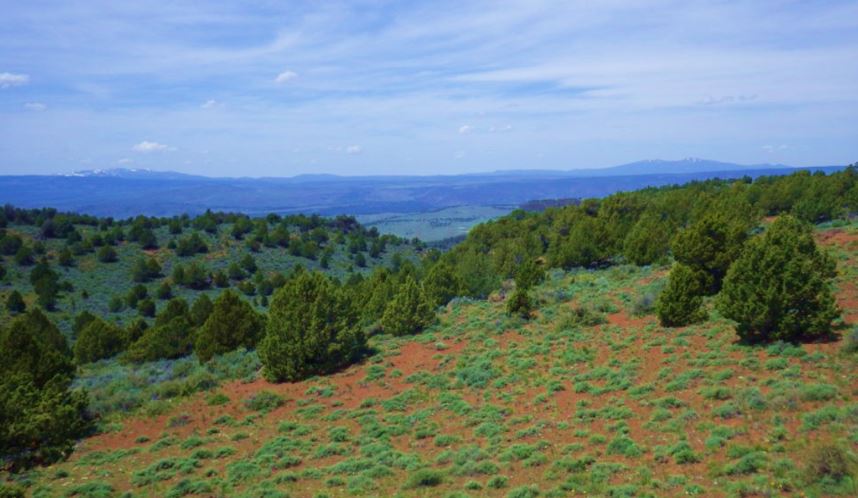Taking Back the Range – Removing Junipers Restores an Oregon Ranch
John O’Keeffe, a third-generation rancher, stands in a lush meadow below the Warner Mountains near Adel, Oregon. His cattle graze in a rolling sea of sagebrush a few hundred yards away.
From the meadow, it looks picture-perfect. But like many rangelands in the western United States, O’Keeffe’s agricultural operation is threatened by an unlikely invader: trees.
“My dad used to take photos of the ranch. Then 20 years later, I’d look at the pictures and wouldn’t even recognize the place. The juniper was closing in, and I was just watching my ranch slowly disappear before my eyes,” says O’Keeffe, pointing to the line of conifer trees on the hillside.
After a century of fire suppression, a green glacier of juniper has spread down from the Warner Mountains’ rocky ridges, taking over prime grazing land. Science has demonstrated how encroaching conifer trees erode the health of rangelands by reducing the amount of water available, diminishing soil health, and crowding out native perennial plants that feed wildlife and cattle. As trees become dense, they also fuel hotter and more severe wildfires.

On O’Keeffe’s ranch, the junipers have spread so much within his lifetime that it has caused a substantial reduction in forage over the years and make it tougher to run his ranch. He and a cowboy would cut juniper from a few acres each summer to keep trails and springs open, but they couldn’t keep up.
“You can only do so much out of an operating budget,” says O’Keeffe.
Then, in 2010, he signed up for a brush management program through the USDA Natural Resources Conservation Service (NRCS) that provided cost-sharing for cutting conifers at a larger scale across the landscape.
Over the next decade, O’Keeffe became a leader in a first-of-its-kind effort to reclaim the disappearing sagebrush range. Private landowners in the Warner Mountains teamed up with the NRCS, the Bureau of Land Management, and other state and local partners to remove young juniper trees from historic shrublands with hand-held chainsaws while leaving old-growth woodlands alone.
O’Keeffe and his neighbors worked hand-in-hand with these public partners to restore 53-square miles of sagebrush country.

“The programs kept coming, and we kept signing up. And we did a lot of good,” says O’Keeffe. “I really felt like I was getting my ranch back.”
Native plants rebounded quickly, providing more forage for livestock. Juniper removal also paid off by boosting the amount of water available on O’Keeffe’s ranch, which helps in dry years like this past one.
Watch the video about the Warner Mountains project featuring John O’Keeffe:
Plus, wildlife benefited after conifers were removed. Scientists found that sagebrush songbird abundance doubled, and the amount of high-quality habitat for sage grouse increased six-fold. Research published this summer in Ecosphere found sage grouse populations grew at a rate that was 12 percent higher where trees were cut versus areas where no trees were removed.
“I’m really thrilled about the whole picture of what’s happening from the ridge top to the valley bottom in the Warner Mountains,” says Jeremy Maestas, an NRCS ecologist who worked on the project.
You may also like
-
Fed plan would kill 500,000 barred owls to “recover” spotted owls
-
BLM resource management plans stymie Western states’ energy development
-
Omnibus bill provision would “unleash” electronic tracking on nation’s cattle
-
Arizona rancher sues to stop million-acre national monument
-
Bob West: Facing the reality of wolves, Colorado ranchers need to be prepared



There’s some good cost effective herbicide that kills juniper too.
They’re amazing trees can last 1000 years if they get started.